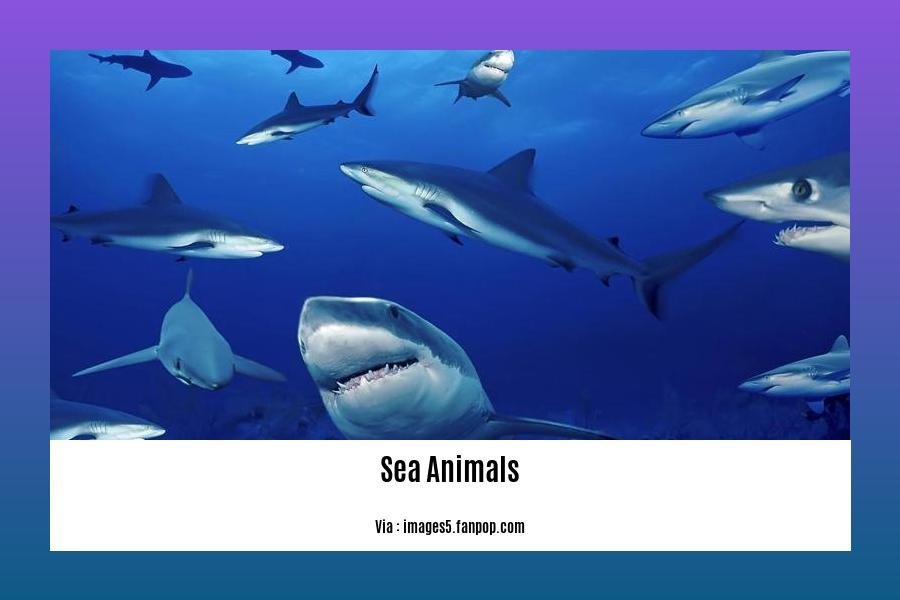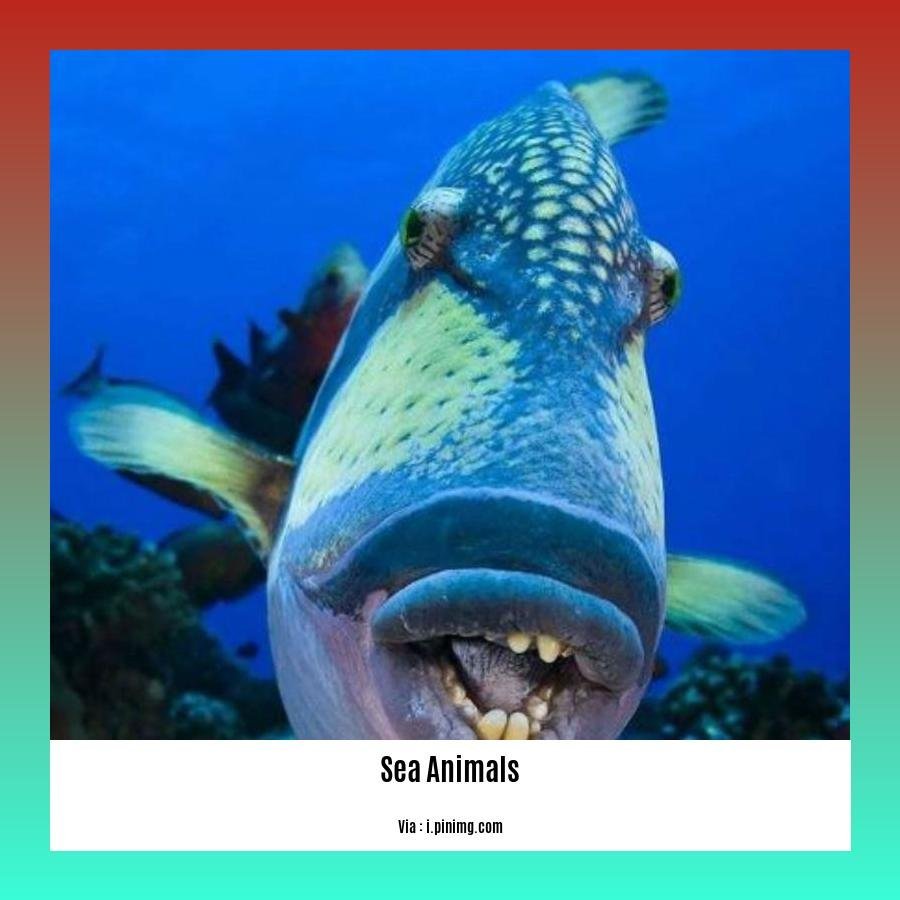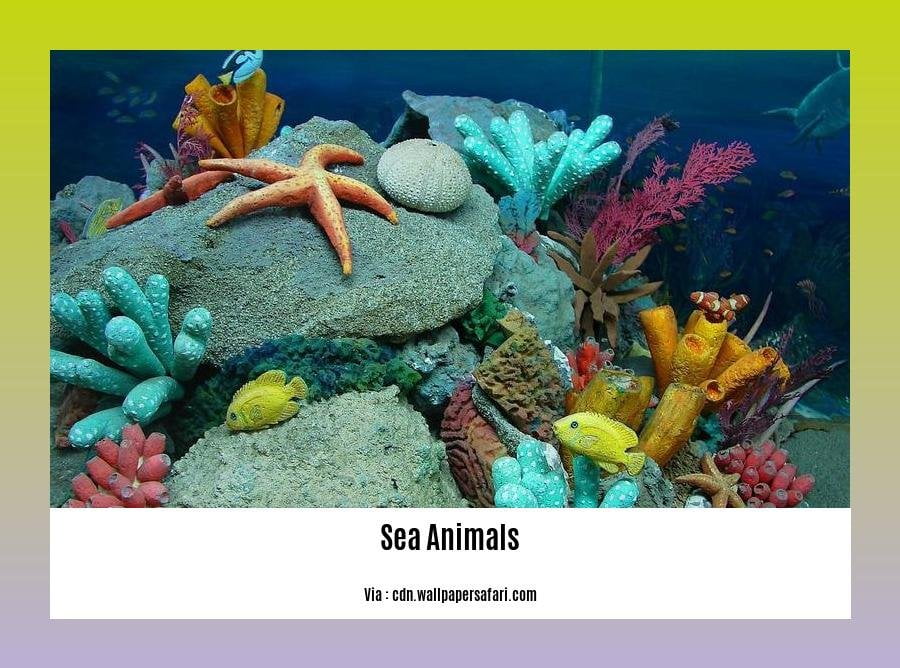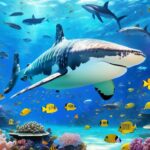Discover the wonders of marine life with our article on fascinating facts about sea animals. From the depths of the oceans to the vibrant coral reefs, these underwater creatures have captivated scientists and nature enthusiasts for centuries. Prepare to be amazed as we delve into the intriguing world of sea animals, shedding light on their remarkable behaviors, unique habitats, and astonishing adaptations. Join us on this exhilarating journey as we reveal the extraordinary diversity of sea animals and emphasize the importance of preserving their delicate ecosystems.
Key Takeaways:
- The blue whale is the largest sea mammal and the largest known animal in the world.
- Sea turtles have been alive since the time of dinosaurs.
- Some sharks, like the great white shark, are warm-blooded while others are cold-blooded.
- Sea lions, seals, and walruses are called pinnipeds due to their winged feet.
- Dolphins possess excellent hearing and vision.
- Whales communicate through singing.
- There are over 230,000 known species of sea animals, including fish, mammals, birds, reptiles, and invertebrates.
- The oceans cover over 70% of the Earth’s surface and contain 97% of the Earth’s water.
- The blue whale, weighing over 200 tons and growing up to 100 feet long, is the largest animal in the ocean.
- Sea animals also include creatures like jellyfish, octopuses, and starfish.
- The electric eel can produce enough electricity to light up to 10 electric bulbs, as per factsbreak.com.
Fascinating Facts about Sea Animals

Welcome to the breathtaking world of sea animals! Prepare to be amazed as we dive deep into the wonders of marine life and explore some fascinating facts that will leave you in awe. From the incredible size of the blue whale to the ancient existence of sea turtles, there is so much to discover about these captivating creatures. Let’s embark on this oceanic adventure together!
The Giants of the Sea
If you’re ready for some mind-boggling facts, hold on tight because we’re starting with the grandest creature of them all—the blue whale. Not only is it the largest sea mammal, but it also holds the title for being the largest known animal on Earth. Imagine a colossal creature that can grow up to 100 feet long and weigh over 200 tons! It is truly a remarkable sight to behold.
Ancient Survivors
Sea turtles have an extraordinary history that dates back millions of years, all the way to the time of dinosaurs. These ancient creatures have managed to survive through the ages, adapting and thriving in various marine environments. A testament to their resilience, sea turtles continue to grace our oceans with their presence, reminding us of the incredible longevity of life.
Hot and Cold Sharks
When it comes to sharks, most people think of cold-blooded predators lurking in the depths of the ocean. While this is generally true, there is an exception—a famous predator known as the great white shark. Unlike its counterparts, the great white shark is unique in that it is warm-blooded. This remarkable adaptation allows it to maintain a higher body temperature, giving it an edge in the cold ocean waters.
Pinnipeds: The Winged Feet
Sea lions, seals, and walruses belong to a special group called pinnipeds, which means “winged feet.” No, they don’t actually have wings, but their powerful flippers resemble them. These remarkable marine mammals have adapted to life both in the water and on land, using their specialized feet to navigate through the depths and haul themselves onto rocky shores.
The Dazzling Intelligence of Dolphins
With their charming smiles and playful nature, dolphins have captivated the hearts of people around the world. But there’s more to these marine mammals than meets the eye. Dolphins possess remarkable intelligence, with their brains being highly developed. Not only do they have excellent hearing and vision, but they also exhibit complex social behaviors and are known for their communication skills.
The Enchanting Songs of Whales
Picture yourself surrounded by the vastness of the ocean, and suddenly you hear a hauntingly beautiful melody echoing through the water. You’ve stumbled upon a chorus of whales singing their hearts out. Whales communicate with each other through elaborate songs, utilizing a range of complex vocalizations. These melodic compositions can travel for miles and play a crucial role in their social interactions.
Diverse Marine Life: A World of Wonders
Prepare to be astounded. Our planet is home to over 230,000 known species of sea animals, ranging from fish and mammals to birds, reptiles, and mesmerizing invertebrates. Just imagine the incredible diversity that resides beneath the ocean’s surface! From vibrant schools of tropical fish to mysterious deep-sea creatures, the marine realm never fails to surprise us with its abundance of life.
Preserving Delicate Ecosystems
The oceans cover more than 70% of the Earth’s surface, harboring an astonishing variety of life within their depths. They are also responsible for producing 50% of the oxygen we breathe. It is crucial for us to recognize the immeasurable value of marine ecosystems and strive to protect them. As we explore the wonders of sea animals, it becomes undeniable that their well-being is intricately linked to the health of our planet.
Discover More: Jellyfish, Octopuses, and Starfish
If you thought the wonders of marine life ended with the creatures mentioned above, think again! Sea animals also include enchanting beings like jellyfish, mysterious octopuses, and beautiful starfish. Each of these creatures has its own unique adaptations and characteristics that make them a vital part of the marine ecosystem. Take some time to discover more about these fascinating inhabitants of the sea.
Unveiling Electrifying Secrets: The Electric Eel
Prepare to be astonished by an electrifying fact! The electric eel has the incredible ability to produce enough electricity to light up to 10 electric bulbs. This remarkable creature generates electric shocks for various purposes, including navigation, communication, and hunting. It serves as a captivating reminder of the astonishing adaptations that exist in the underwater world.
As we conclude our exploration of fascinating facts about sea animals, we hope you’ve gained a deeper appreciation for the wonders that lie beneath the ocean’s surface. These remarkable creatures continue to fascinate us with their incredible adaptations, behaviors, and the extraordinary diversity they bring to our planet. Let us remember the importance of preserving their delicate ecosystems, ensuring that future generations can continue to be mesmerized by the enchanting world of marine life.
So dive in, embrace curiosity, and let the captivating world of sea animals fuel your awe and wonder!
Did you know that pond water is home to a diverse ecosystem? Discover fascinating facts about pond water by clicking here.
Looking for some adorable facts about puppies and kittens? Click here to uncover some interesting tidbits about these furry companions.
Curious about the benefits of salt water pools? Dive into a world of facts about salt water pools by clicking here.
Life Cycles and Reproduction

Life cycles and reproduction play a vital role in the fascinating world of sea animals. From the incredible diversity of strategies to the remarkable adaptations they have developed, understanding these aspects provides us with valuable insights into their behavior and the need to protect their delicate ecosystems.
The Diversity of Life Cycles
Sea animals exhibit a wide range of life cycles, each tailored to their specific needs and environment. Oviparous species, such as turtles, lay eggs that hatch after being laid by the parent (Ocean Life Education). This method ensures the survival of their offspring, even in challenging conditions. On the other hand, viviparous marine animals, including whales, dolphins, and seals, give birth to live young after nourishing their developing embryos internally (Ocean Life Education). This internal nurturing allows for more control over the survival and development of their offspring.
Beyond these basic categories, many marine invertebrates have complex life cycles involving multiple stages and forms (Ocean Life Education). Metamorphosis, a change in physical form, structure, or substance, is a common phenomenon among certain sea animals like sea urchins, sea stars, and crustaceans (Ocean Life Education). This intricate process helps them adapt to different ecological niches and maximize their chances of survival.
Unusual Reproductive Processes
The world of sea animals also boasts intriguing reproductive processes that captivate our imagination. Take the male seahorse, for instance. Unlike most species, it is the male seahorse that becomes pregnant, carrying and nurturing the eggs until they hatch (Animal Corner). This unique adaptation showcases the diverse and unconventional reproductive strategies found in the marine realm.
Insights and Conservation Efforts
Understanding the life cycles and reproductive habits of sea animals is essential for scientists and researchers. By unraveling these intricate processes, they gain valuable insights into the behavior, population dynamics, and unique adaptations of these incredible creatures (MarineBio Conservation Society). This knowledge is crucial for the development of effective conservation strategies aimed at preserving marine ecosystems and ensuring the survival of these magnificent beings.
Key Takeaways:
- Marine animals exhibit diverse life cycles, including oviparous and viviparous strategies.
- Many marine invertebrates undergo metamorphosis, adapting to various ecological niches.
- The male seahorse’s unique reproductive process highlights the unconventional strategies found among sea animals.
- Understanding these life cycles provides valuable insights for conservation efforts.
[Citation:
– Ocean Life Education. “Life Cycles of Ocean Animals for Schools.” Ocean Life Education. Accessed September 25, 2021. Link
– Animal Corner. “Seahorse Reproduction – Cycle, Process & System.” Animal Corner. Accessed September 25, 2021. Link]
Behavioral Patterns in Sea Animals: Unveiling the Intriguing World of Marine Life
Sea animals inhabit a vast and diverse realm, teeming with fascinating creatures that captivate our imagination and spark our curiosity. One aspect that alludes to their extraordinary nature is their behavioral patterns. These patterns shed light on how sea animals interact with their environment and with one another, providing valuable insights into their ecology and conservation. In this article, we will delve into the captivating world of behavioral patterns in sea animals, uncovering the mysteries of their social lives, sensory systems, and the factors that shape their behaviors.
The Social Lives of Sea Mammals: An Exploration of Cooperative Behaviors
Sea mammals, such as whales, dolphins, and seals, exhibit complex cooperative behaviors that showcase their highly evolved social lives. Among these behaviors is bubble-net feeding, a remarkable display of cooperation among humpback whales. In this behavior, a group of whales dives beneath its prey, blowing a ring of bubbles that forms a “net” trapping their food. As they rise together, the whales then swim through the center of the bubble net, gulping in mouthfuls of fish. This behavior underscores the significance of social bonds and coordination among marine mammals, highlighting their ability to strategize and work together for survival (The Conversation).
Sensory Systems: How Sea Animals Perceive Their Environment
When it comes to understanding the behavioral patterns of sea animals, their sensory systems play a vital role. This is particularly evident in sea otters, who rely on their acute sense of touch to perceive their environment and manipulate objects. With the highest fur density among mammals, sea otters have an incredible tactile ability that allows them to locate and capture prey, such as sea urchins, with remarkable precision. Their behavior and physical performance are intricately linked to their unique morphology and physiology, emphasizing the close relationship between sensory perception and behavior in sea animals (Critter Science).
Genetic and Social Influences: Shaping Marine Mammal Behavior
The behavior of marine mammals is not solely determined by their genetic makeup. Social factors also play a significant role in shaping their behaviors. Studies have shown that both genetic and social factors contribute to the behavior of sea mammals, highlighting the complex interplay between nature and nurture. For instance, sea otters, which are categorized as raptorial predators, exhibit different foraging behaviors depending on social cues and learned traditions. This demonstrates that social learning and cooperation are critical elements in their behavioral patterns (The Conversation).
Exploring Animal Behavior: From Cathemeral to Nocturnal Patterns
Sea animals encompass a wide range of species, each exhibiting distinct behavioral patterns. These patterns are often categorized based on their activity patterns throughout the day, including cathemeral, crepuscular, diurnal, matutinal, nocturnal, and vespertine behaviors. Cathemeral animals, such as sea lions, display sporadic activity patterns throughout the day, while crepuscular species, like dolphins, are most active during dawn and dusk. Diurnal animals, such as sea turtles, are active during daylight hours, while matutinal species, like certain types of fish, are more active in the early morning. Nocturnal animals, such as some species of octopuses, become active during the night, while vespertine species, like bats, become active during twilight. These diverse behavioral patterns adapt sea animals to different ecological niches, optimizing their chances of survival and enabling them to thrive in their respective habitats (Critter Science).
Key Takeaways:
- Sea animals exhibit a diverse range of behavioral patterns, including bubble-net feeding in humpback whales.
- Sensory systems, such as the acute sense of touch in sea otters, play a crucial role in shaping their behavior.
- Genetic and social factors influence the behavior of marine mammals, emphasizing the importance of social learning and cooperation.
- Sea animals display various activity patterns throughout the day, classified as cathemeral, crepuscular, diurnal, matutinal, nocturnal, and vespertine.
Citation
Citation
Threats and Conservation Efforts for Sea Lions
Sea lions, a type of marine mammal known as pinnipeds, are currently facing numerous threats to their population. Conservation efforts are crucial in order to protect these magnificent creatures and ensure their survival.
Conservation Status and Threats
Endangered Species: Out of the six different species of sea lions, three are classified as endangered by the International Union for Conservation of Nature (IUCN) (Source: Nature World News). This highlights the urgency of addressing the threats they face.
Concern for Australian Sea Lions: The Australian sea lion, a genetically isolated species, is experiencing a decline in its global population. With only around 6,500 mature individuals remaining, mainly found in Western and South Australia, immediate conservation action is required (Source: Treehugger).
Multiple Threats: Sea lion species face a myriad of threats. Pollution, climate change, bycatch (unintentional catch during fishing), and diseases introduced by other species all pose significant risks to their populations (Source: Treehugger).
Gillnet Fishing: Both Australian and New Zealand sea lions are particularly threatened by gillnet fishing. This fishing method presents a considerable danger to their survival (Source: Treehugger).
Climate Change Impact: Galapagos sea lions are especially vulnerable to the impacts of climate change, which affect their habitat and food sources. Their survival is directly tied to addressing climate-related factors (Source: Treehugger).
Conservation Efforts
Collaborative Conservation: Several conservation organizations and initiatives, such as the World Wildlife Fund (WWF), are actively working to protect ocean and marine wildlife, including sea lions (Source: World Wildlife Fund). Through collaborative efforts, these organizations are pooling resources and expertise to make a difference.
Comprehensive Measures: Conservation efforts targeting sea lions encompass various approaches. These include promoting ocean conservation, reducing pollution, addressing climate change, and implementing measures to prevent bycatch. It is essential to take a multi-faceted approach in order to mitigate the threats they face (Source: Treehugger).
Individual Contributions: Every individual can contribute to the conservation of sea lions. Adopting ocean-friendly habits, such as reducing the use of single-use plastics, supporting sustainable fishing practices, and advocating for the establishment of marine protected areas, can significantly contribute to their preservation (Source: Clearwater Aquarium).
Key Takeaways:
- Sea lions are facing significant threats, including pollution, climate change, bycatch, and diseases.
- Three out of the six sea lion species are currently classified as endangered.
- Gillnet fishing poses a considerable threat to sea lions, especially in Australia and New Zealand.
- Galapagos sea lions are highly susceptible to the impacts of climate change.
- Conservation efforts involve collaborative initiatives, comprehensive measures, and individual contributions to protect sea lion populations.
FAQ
Q1: What is the largest sea mammal in the world?
A1: The largest sea mammal in the world is the blue whale. It is also the largest known animal on Earth.
Q2: Are sea turtles ancient creatures?
A2: Yes, sea turtles have been alive since the time of dinosaurs. They have existed for millions of years.
Q3: Are all sharks cold-blooded?
A3: Most sharks are cold-blooded, but there are exceptions. For example, the great white shark is one of the few species that is warm-blooded.
Q4: What are sea lions, seals, and walruses called?
A4: Sea lions, seals, and walruses are called pinnipeds. This name refers to their winged feet, which enable them to swim efficiently in water.
Q5: How do whales communicate?
A5: Whales communicate by singing. They produce complex songs that can travel long distances underwater to communicate with other individuals.
- Sept 31 Myth: Unveiling Calendar Secrets - March 18, 2025
- How Long & Till December 18, 2025: Accurate Countdown Guide - March 18, 2025
- Discover Japanese Artists: A Complete History - March 18, 2025
















